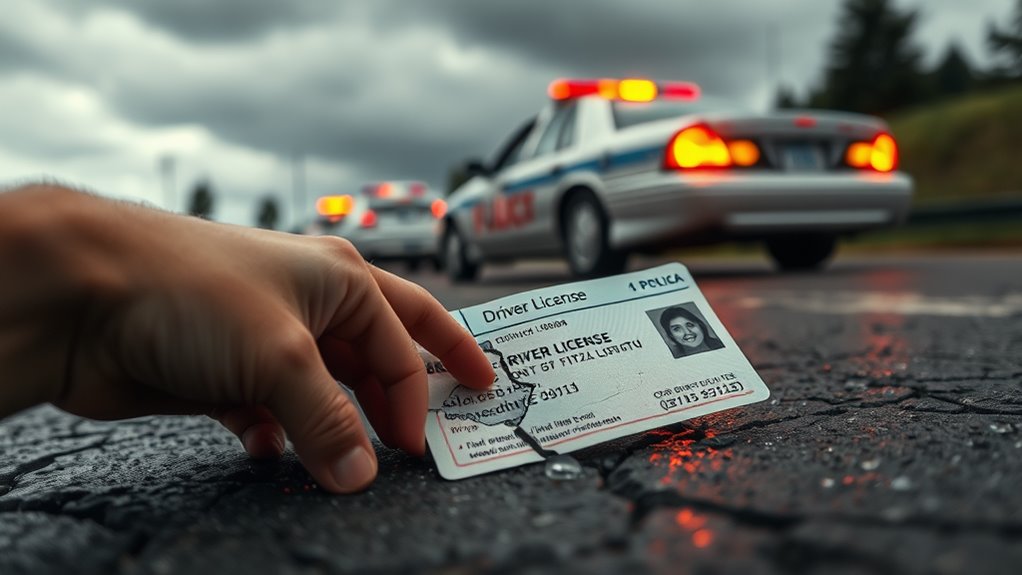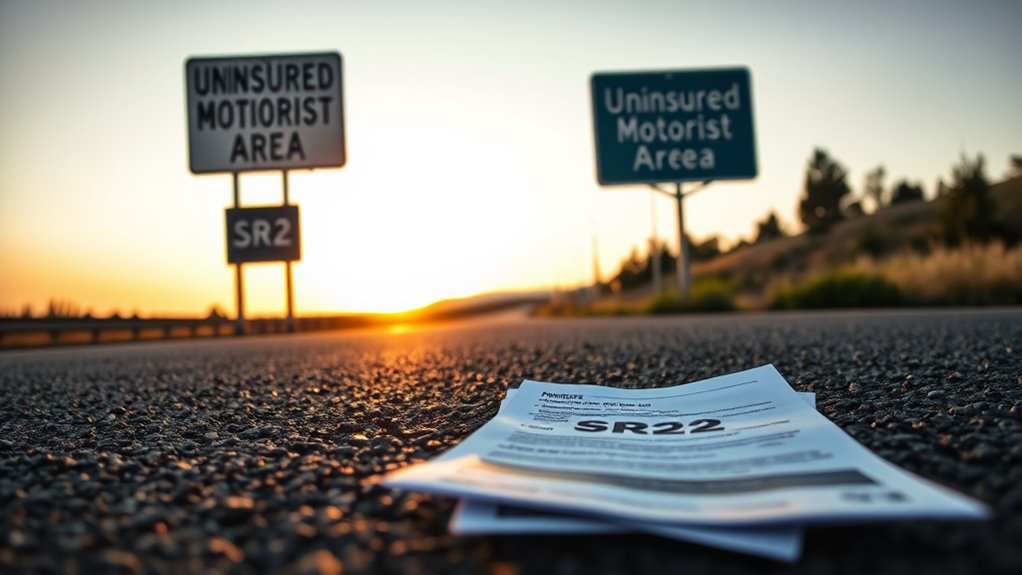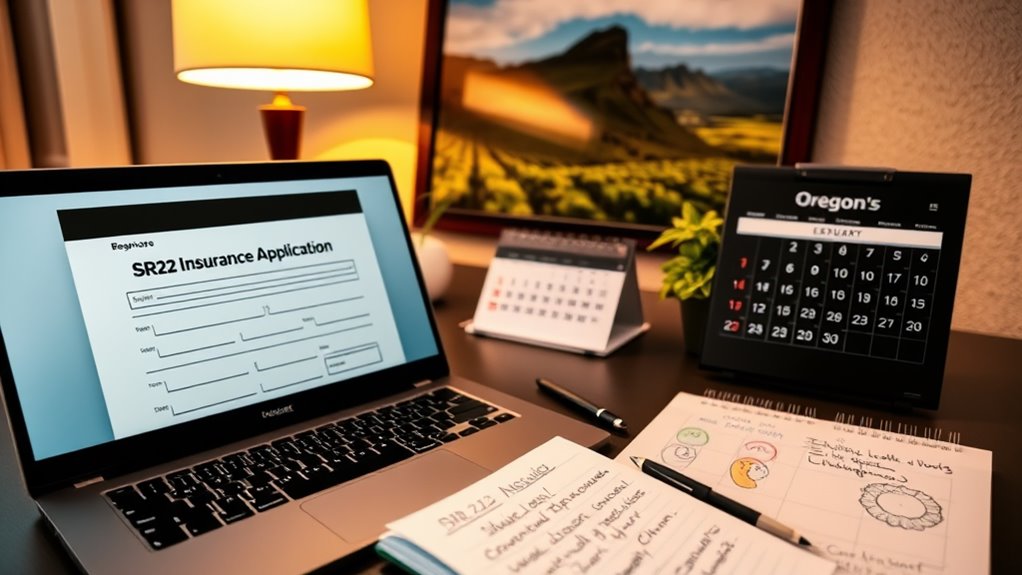7 Tips for Affordable Non-Owner SR22 Insurance Oregon
Need SR-22 insurance assistance?
 CALL our licensed Agents
(Mon-Fri, 8am – 5pm PST) for personalized guidance CALL our licensed Agents
(Mon-Fri, 8am – 5pm PST) for personalized guidance
|
If you're looking for affordable non-owner SR-22 insurance in Oregon, you've got options. Understanding the basics of this type of coverage is essential. Comparing quotes from various providers can lead to significant savings. Plus, there are discounts and strategies that can help lower your premiums. Curious about how to maximize these benefits? Let's explore some key tips that can make a real difference in your insurance costs.
Key Takeaways
- Shop Around for Quotes: Compare rates from multiple insurers to find the best premiums and coverage options for non-owner SR-22 insurance.
- Utilize Discounts: Look for discounts such as safe driving, bundling policies, or autopay to lower your insurance costs.
- Maintain a Clean Driving Record: A clean driving history can significantly reduce premiums and help avoid license suspensions.
- Understand Coverage Requirements: Familiarize yourself with Oregon's minimum coverage standards to ensure you meet legal requirements without overpaying.
- Adjust Coverage Details: Evaluate and adjust your coverage limits to find a balance between adequate protection and affordability.
Understand the Basics of Non-Owner SR-22 Insurance

When you find yourself needing to drive but don't own a vehicle, understanding non-owner SR-22 insurance becomes essential. This insurance provides the required liability coverage for individuals who borrow cars, ensuring you meet state minimum requirements after serious driving infractions. It's crucial to recognize that the SR-22 isn't an insurance policy; it's a certificate proving your financial responsibility, filed with the DMV by your insurer. You'll need to maintain continuous coverage for at least three years, as lapses can lead to license suspension. Additionally, knowing the state minimum requirements can help you choose the right coverage for your situation. While this coverage doesn't protect against vehicle damage, it does offer basic liability for bodily injury and property damage. Understanding these basics helps you stay compliant and avoid further complications, and remember that a non-owner car insurance policy can be purchased without vehicle ownership.
Compare Quotes From Multiple Insurance Providers
Comparing quotes from multiple insurance providers is a smart strategy for finding the best non-owner SR-22 insurance rates. Costs can vary greatly, with annual premiums ranging from about $526 to over $1,145 depending on the provider.
For instance, State Farm offers rates around $44 monthly, while Farmers may charge about $95. By shopping around, you can uncover lower premiums and a wider selection of coverage options.
Each insurer assesses risk differently, meaning your driving history and credit score will play a role in your rates. Take the time to evaluate policy terms and customer service levels, as they can also impact your overall experience.
Don't settle for the first quote—explore your options to save money.
Look for Discounts and Special Offers
How can you make non-owner SR-22 insurance more affordable? Start by looking for discounts and special offers that many insurers provide. You might qualify for reductions if you maintain a safe driving record or bundle your policies.
Don't forget to ask about common discounts like autopay, paperless billing, or paying your premium in full upfront. These can greatly lower your costs. Some insurers also offer unique programs like usage-based insurance or loyalty rewards that could further help you save.
Additionally, consider adjusting your coverage details, which may open up more discount opportunities. Always inquire about any available discounts to verify you're getting the best rate for your non-owner SR-22 insurance.
Maintain a Clean Driving Record

Maintaining a clean driving record is essential if you want to keep your non-owner SR-22 insurance affordable. A spotless record not only lowers your insurance premiums but also prevents license suspensions.
To achieve this, obey all traffic laws and avoid distractions like texting while driving. Regularly checking your driving record guarantees accuracy and allows you to dispute any errors promptly.
Safe driving habits, such as being aware of construction zones, considerably reduce the risk of traffic violations. Remember, employers often look for a clean driving history for positions involving driving, adding another incentive to stay responsible.
Ultimately, a clean record leads to long-term savings and peace of mind on the road.
Complete Defensive Driving Courses
Taking steps to maintain a clean driving record can lead you to explore additional ways to keep your non-owner SR-22 insurance costs manageable.
One effective option is to complete a defensive driving course. Not only can these courses result in significant insurance discounts, but they also enhance your driving skills and help you handle hazardous situations safely.
Plus, successful completion may lead to point reduction on your license, making it easier to secure affordable insurance. With many courses available online, you can study at your own pace, ensuring flexibility in your schedule.
Know the Legal Requirements and Duration
Understanding the legal requirements for non-owner SR-22 insurance in Oregon is essential for anyone looking to drive legally without owning a vehicle.
You must meet specific coverage standards, including:
- Bodily injury liability: $25,000 per person, $50,000 per accident
- Property damage liability: $20,000 per accident
- Uninsured motorist bodily injury: $25,000 per person, $50,000 per accident
- Personal injury protection: $15,000 per accident
Typically, you'll need to maintain SR-22 insurance for three years, but infractions can extend this duration.
It's vital to keep the SR-22 certificate on you while driving to avoid legal issues.
Notify your insurance company once you've fulfilled the requirement so they can cease filing the form.
Choose the Right Coverage Limits

When selecting coverage limits for your non-owner SR-22 insurance in Oregon, it's crucial to balance affordability with adequate protection.
Oregon requires minimum liability limits of $25,000 for bodily injury per person and $50,000 per accident, along with $20,000 for property damage.
Don't forget about uninsured/underinsured motorist coverage, which is also mandated and provides an additional layer of safety.
You'll want to weigh personal injury protection (PIP) as well, with a minimum of $15,000 required.
While minimums are a good starting point, reflect on your personal circumstances and driving history. Higher coverage limits may cost more upfront but can save you from significant expenses in case of an accident.
Always compare quotes to find the best rates.
Conclusion
In today's fast-paced world, securing affordable non-owner SR-22 insurance in Oregon doesn't have to feel like searching for a needle in a haystack. By comparing quotes, seeking discounts, and maintaining a clean driving record, you can save considerably. Remember to stay informed about legal requirements and adjust your coverage wisely. With these tips in your back pocket, you'll navigate the insurance landscape like a pro and find the best deal that suits your needs.


















